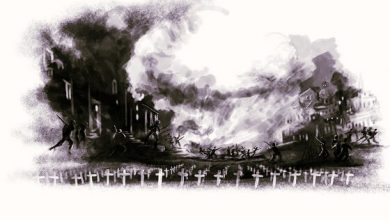The short story The Late Bud by Ama Ata Aidoo was first published in No Sweetness Here and Other Stories (1969). It revolves around the life of a ten-year-old girl Yaaba who is unlike other girls of her age. She is rebellious in nature and flouts all systemic conventions followed in her household and thus often becomes an object of scrutiny by her mother Benyiwa. The strict demeanor of her mother distances Yaaba over time who eventually questions her legitimacy as her mother’s own daughter. But after a series of misunderstandings, the mother-daughter unite. Thus, Aidoo’s work explores the complexities surfacing relationships along with a generation gap. She juxtaposes the innocence of a child with the harsh and cruel realities of society which is embedded in cultural norms and expectations.
Ama Ata Aidoo is a Ghanaian author born in a privileged African family that supports women’s education and empowerment. Her preoccupation lies in bringing forth issues concerning identity, oppression, and cultural conflicts through a female protagonist. Often, her works comprise a journey undertaken by the readers through the lens of a young female, rendering it the touch of a bildungsroman. One traces the growth and a shift in ideologies that are deeply rooted in African cultures. Aidoo’s central character (usually a woman) in each narrative becomes an agent of change who questions the existing set of norms in a clash against her elders.
The Late Bud | Summary
The story revolves around a ten-year-old girl Yaaba who is distinct from her siblings as well as her peers. She spends her day playing by the Big Trunk and refuses to perform any errands given by her mother Benyiwa. As a common practice to educate their children, Yaaba’s family believes in receiving the food of peace only if one dutifully performs all errands. Since Yaaba always keeps herself at a distance from such practices, her mother passes her looks of criticism and maintains a scornful approach towards her. However, Yaaba delves into a more pressing matter than her mother’s remarks. She ponders over her mother’s lack of affection for her through an observation of her mother’s address to her sister as “My child Adwoa” which is not the same for Yaaba. This internal conflict gives birth to questions that a child is usually not courageous enough to ask his/her parents i.e. about their true parentage. Yaaba doubts her mother to be her true biological parent solely on the basis of one observation. She yearns for her mother’s love, from a mother who is always busy with household chores and continuous grumbling.
One night before Christmas, her mother runs out of red earth to polish the floor and Yaaba hears her complaining to herself. She decides to collect the red earth for her Maami along with her two friends Panyin and Kakra and asks them to wake her up early in the morning. After coming back home, she senses sarcasm and mockery in her mother’s tone who asks her to take her food like an animal. Yaaba gulps her food and prepares to sleep. But her mother arrives and starts thrashing her with insults and blows to make her realize the fruitless life she has been living to date. Soon after this, Benyiwa sleeps alongside Adwoa and the sight leaves Yaaba in tears. She is hurt not by the blows but by the absence of motherly emotions her mother should otherwise harbor for her.
At midnight, Yaaba walks out of the room to grab an apampa and a hoe but she slips off in a large bowl of water and faints in the dark room. Her mother assumes a thief to be on their premises and alarms the neighbors. But Yaaba’s unmoving body baffles them. After a lot of speculations, the neighboring women advise Benyiwa to be polite in her behavior towards her daughter. The next morning when the kids come to wake up Yaaba, her mother learns about Yaaba’s pure intentions to undertake an errand for her. She undergoes a transformation and runs to the sleeping little girl with teary eyes and addresses her as “My child.” Still, under the influence of the hit last night, Yaaba could not comprehend her mother’s loving gesture toward her. Too many thoughts cloud her mind. The possibility of her mother’s change of heart, the surety of her being Benyiwa’s daughter, and her friend’s pending arrival to collect the red earth- all amalgamate into a delusion and she dozes off again.
The Late Bud | Analysis
Aidoo’s exploration of matrilineal families existing in African societies categorizes her work under feminist writing. The issues pertaining to gender are not accessible through the lens of patriarchy exclusively though. The writer exposes intra-gender conflicts that are subject to a generation gap and cultural expectations. As a postcolonial writer, Aidoo investigates a woman’s position in the long-standing traditions of Africa who is a triply oppressed figure in literature- as a woman, as a black woman, and as a postcolonial subject. She aims to unearth the inner potential of the African woman which is hidden under a heap of myths, misconceptions, and rapid generalizations. For instance, the story opens with a mythical saying “‘The good child who willingly goes on errands eats the food of peace.’” Children, especially women are conditioned by their elders to work hard and look after their homes in order to attain peace and god’s grace. While such sentimental beliefs stem from conventional strictures, Christianity promotes them. During colonization, women contributed to the list of maximum converts owing to the religion’s emancipation propaganda. However, Africans clubbed Christianity with their indigenous rituals and formed religions and practices of their own. The practice of putting the red earth on the floor before Christmas as articulated in the story is a native custom to the Africans.
Another point of focus in the story is the interaction between languages. Aidoo employs her bilingual identity in the creation of this work to portray the richness of both her native language and the colonial tongue. According to a critic, “Aidoo follows a tradition of writers of Mfantse origin who, as part of their craft and philosophy, have chosen to explore the Mfantse language as it interfaces with the English language in their creative works.” She displays a sense of commitment and pride in her African culture and tradition. In one of her interviews published in In their own voices: African women talk, she claims “I haven’t tried to speak the Queen’s English. I’ve always tried to let the flavor of my African background come through in terms of the idioms and so on.” Through various idiomatic expressions and cultural methods, the writer attempts to reconnect to her roots.
The centre stage of the story is ascribed to the girl Yaaba through whom the author grants the female African subject an agency that had been previously denied. She foregrounds a position from which oppressed woman needs to stage resistance, like Yaaba’s refusal to partake in household chores. Her rebellion against the prescribed code of conduct is a radical move to delineate the potential of African women in fighting against a cause. Yaaba’s innocent remarks against the discriminatory practices of her mother reveal the latent physical violence inflicted by a woman on other women in African families. Aidoo exposes certain flaws in her culture that come to light through Yaaba’s internal conflicts. Internal discrimination between siblings, child abuse, failure to navigate and understand a child’s emotions, and forced obedience are some pressing issues. The family operates on a disciplinary setup rather than an emotional one. Thus, Yaaba is not an eccentric child-she is a human being who is devoid of love and affection because she rejects certain social practices.
With a third-person omniscient narrator and a sentimental tone, Aidoo generalizes the narrative and Yaaba becomes a representative of young girls who have the caliber to be emotionally tough and raise their voice against the wrong along with questioning certain outdated practices still existing in many cultures.
The Late Bud | Themes
Family
Most of Aidoo’s stories focus on family and its values. Yaaba’s family is also one of the traditional African families who believe in the unfaltering relationship between peace and good deeds. They eat their meals together, celebrate festivals in unison and contribute to house errands. A sense of mutual love forms the core of such families but Yaaba fails to accommodate one until the end of the story.
Transformation
There is a dual transformation that the readers witness during the course of the narrative. On one hand, Yaaba decides to collect red earth for her mother to polish the floor for Christmas. She has never participated in any household errands and the undertaking of a task that involves an early morning long walk to the pit is evidence of her determination. On the other extreme, Yaaba’s mother Benyiwa is emotionally overwhelmed when she learns about her daughter’s efforts through her two friends. She comes out of her shell and showers love on Yaaba who is asleep after she hit her head one night before. These incidents indicate the constant evolution of a human being and how it requires one small act to create a huge difference.
Culture
Aidoo’s story puts a thrust on cultural practices and sayings. The story’s commencement with a popular saying “’The good child who willingly goes on errands eats the food of peace’” conveys the duty-oriented upbringing of African children. Also, certain practices deemed to work on a fainted person like “Touch her feet with a little fire,” “Squeeze a little ginger juice into her nostrils,” and “Pour water into her nose” suggested by neighbors when Yaaba hit her head and fell down give an insight to remedial beliefs passed on since generations. Lastly, the ritual of polishing the house floor with red earth on Christmas before visiting the church displays an amalgamation of nativity with colonial religion.
Rebellion
As a ten-year-old, Yaaba in her own ways retaliates against the prescribed norms. She stays out till late hours and comes back home once she reaches the satisfaction of breaking all the rules. She even eavesdrops on her mother’s self-talk even though elders prohibit such acts and lastly, contemplates her legitimacy as her mother’s biological daughter. The critical nature of questioning by Yaaba provides her an edge over her other companions as she is not a blind follower.
The Late Bud | Literary Devices
Simile
Often, Yaaba’s eating activities in the story are compared to that of animals to express the inhumane treatment she experienced at her house. Phrases like slinking like a cat to take her food, swallowing that huge lump of fufu as quickly as a hen would swallow corn and sprawled like a freshly-killed overgrown cock refer to instances when Yaaba prepared to eat her food.
Metaphor
Yaaba’s mother, continuing her comparison to animals, addresses her as “you moth bitten grain” to accuse her sand-filled body after playing as something unfit for her pure house.


